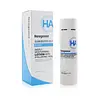What's inside
What's inside
 Key Ingredients
Key Ingredients

 Benefits
Benefits

 Concerns
Concerns

No concerns
 Ingredients Side-by-side
Ingredients Side-by-side

Water
Skin ConditioningGlycerin
HumectantPropanediol
SolventGlycosyl Trehalose
Emulsion StabilisingPEG-40 Hydrogenated Castor Oil
EmulsifyingHydrogenated Starch Hydrolysate
HumectantChlorphenesin
AntimicrobialAllantoin
Skin ConditioningAcrylates/C10-30 Alkyl Acrylate Crosspolymer
Emulsion StabilisingPhenoxyethanol
PreservativeAloe Barbadensis Leaf Juice
Skin ConditioningSodium Hyaluronate
HumectantSodium Hydroxide
BufferingO-Cymen-5-Ol
AntimicrobialCaprylic/Capric Triglyceride
MaskingSalvia Sclarea Extract
AntiseborrhoeicXanthan Gum
EmulsifyingParfum
MaskingSodium Benzoate
MaskingPotassium Sorbate
PreservativeHyaluronic Acid
HumectantEthylhexyl Palmitate
EmollientSilica Dimethyl Silylate
EmollientCaprylyl Glycol
EmollientButylene Glycol
HumectantWater, Glycerin, Propanediol, Glycosyl Trehalose, PEG-40 Hydrogenated Castor Oil, Hydrogenated Starch Hydrolysate, Chlorphenesin, Allantoin, Acrylates/C10-30 Alkyl Acrylate Crosspolymer, Phenoxyethanol, Aloe Barbadensis Leaf Juice, Sodium Hyaluronate, Sodium Hydroxide, O-Cymen-5-Ol, Caprylic/Capric Triglyceride, Salvia Sclarea Extract, Xanthan Gum, Parfum, Sodium Benzoate, Potassium Sorbate, Hyaluronic Acid, Ethylhexyl Palmitate, Silica Dimethyl Silylate, Caprylyl Glycol, Butylene Glycol
Ingredients Explained
These ingredients are found in both products.
Ingredients higher up in an ingredient list are typically present in a larger amount.
Caprylyl Glycol is a humectant and emollient, meaning it attracts and preserves moisture.
It is a common ingredient in many products, especially those designed to hydrate skin. The primary benefits are retaining moisture, skin softening, and promoting a healthy skin barrier.
Though Caprylyl Glycol is an alcohol derived from fatty acids, it is not the kind that can dry out skin.
This ingredient is also used as a preservative to extend the life of products. It has slight antimicrobial properties.
Learn more about Caprylyl GlycolGlycerin is already naturally found in your skin. It helps moisturize and protect your skin.
A study from 2016 found glycerin to be more effective as a humectant than AHAs and hyaluronic acid.
As a humectant, it helps the skin stay hydrated by pulling moisture to your skin. The low molecular weight of glycerin allows it to pull moisture into the deeper layers of your skin.
Hydrated skin improves your skin barrier; Your skin barrier helps protect against irritants and bacteria.
Glycerin has also been found to have antimicrobial and antiviral properties. Due to these properties, glycerin is often used in wound and burn treatments.
In cosmetics, glycerin is usually derived from plants such as soybean or palm. However, it can also be sourced from animals, such as tallow or animal fat.
This ingredient is organic, colorless, odorless, and non-toxic.
Glycerin is the name for this ingredient in American English. British English uses Glycerol/Glycerine.
Learn more about GlycerinWater. It's the most common cosmetic ingredient of all. You'll usually see it at the top of ingredient lists, meaning that it makes up the largest part of the product.
So why is it so popular? Water most often acts as a solvent - this means that it helps dissolve other ingredients into the formulation.
You'll also recognize water as that liquid we all need to stay alive. If you see this, drink a glass of water. Stay hydrated!
Learn more about WaterXanthan gum is used as a stabilizer and thickener within cosmetic products. It helps give products a sticky, thick feeling - preventing them from being too runny.
On the technical side of things, xanthan gum is a polysaccharide - a combination consisting of multiple sugar molecules bonded together.
Xanthan gum is a pretty common and great ingredient. It is a natural, non-toxic, non-irritating ingredient that is also commonly used in food products.
Learn more about Xanthan Gum